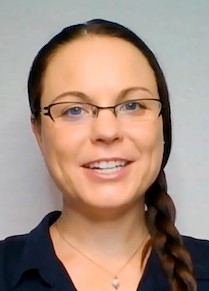Website: tamingthezebra.org
Mailing List: https://www.tamingthezebra.org/join-the-email-list
Excerpt from: Taming the Zebra – It’s Much More than Hypermobility: The Definitive Physical Therapy Guide to Managing HSD/EDS, Volume 1 Systemic Issues and General Approach
(Due out Winter of 2023)
Dysautonomia, HSD/EDS and the GI System
The GI system has just as many nerves as the spinal cord. The patient and practitioner cannot overlook the Autonomic Nervous System (ANS) when dealing with gut issues. They are one in the same. The GI system’s nerve supply is primarily the ANS. The Vagal Nerve (or Vagus nerve) part of the ANS, innervates the digestive tract from the esophagus to the splenic flexure of the colon. The sacral parasympathetic nucleus (another part of the ANS) innervates the colon and rectum. When someone has low Vagal tone, or a dysfunctioning ANS, this will impair GI motility. Dysfunction of the Vagus nerve can cause poor mobility in the esophagus as well, causing difficulty swallowing (see figure 6.7). A well functioning Vagus nerve also may help reduce inflammation in the gut as low tone in this nerve is associated with higher levels of inflammation within the body. The GI system and the ANS can be a chicken-or-egg scenario when symptoms occur. Knowing the answer to which came first may not be as important for some as addressing both systems to reduce symptoms. Exploring that complex question can be very helpful in regards to long term care and control of health.
| Conditions to Investigate with Difficulty Swallowing |
| DysautonomiaEsophageal dysfunction (structural or functional)Local nerve irritation to the throat musculatureUpper cervical instabilityEagle SyndromeUpper thoracic or cervical spine involvement |
Figure 6.7 Difficulty swallowing can be due to a number of conditions. These should be explored with the patient to avoid missing a condition that will require a referral to a specialist.
Episodes of Dysautonomia may also be triggered by events that happen in the gut. We see this with gastric dumping. For someone with impaired motility/movement of the food through the GI system, one will lose the rhythmical small contractions, and the stomach may dump its contents rapidly into the small intestine. With this, the food is not fully broken down, and one is left with larger particles than the small intestine is used to taking care of, along with a larger portion of food at one time that can cause some stretching of the small intestine. When the small intestine registers this stretch occurring in the organ, the nerves try to increase its response to help move the food through the area and this can cause local pain to the small intestine. Along with a physical pain response, the body releases additional hormones along with shifting the blood flow back to the GI system to assist with this “emergency” of a dumping response. When the blood flow is adjusted to the system, this begins to trigger a shift in the Sympathetic Nervous System and may cause an overall systemic autonomic response as the body struggles to find balance again (see Figure 6.8).

Figure 6.8 Dumping Syndrome is a reaction of the ANS seen in those with Dysautonomia and/or motility issues in the gut.
Early or late dumping responses may occur within the same patient. Early dumping is an ANS response from the reaction that occurs within 30 minutes of eating because the small intestine is being stretched, there is an increase in hormone release, and the ANS overcompensates to assist in the event. This can be seen in the GI system as malnutrition in protein energy and manifest in the rest of the body as the following:
- Heart palpitations
- Tachycardia (increased heart rate)
- Feeling the need to lie down after meals
- Flushing or paleness
- Sweating
- Lightheadedness
- Drop in blood pressure
- Headaches
- Possible fainting
- Feeling full soon into eating
- Stomach pain
- Nausea
- Abdominal area cramping
- Bloating
- Rumbling/gurgling in the GI system after eating
Late dumping can be seen one to three hours after eating a meal. This can be from an increase in the hormones secreted into the GI system, chronic GI inflammation, Dysautonomia, or a history of Diabetes. Symptoms include:
- Sweating
- Faintness
- Decreased concentration, brain fog
- Varying levels of consciousness
Late dumping is less common than early dumping. An individual can have both early and late dumping occur with meals. Specific meal strategies can be found later in this GI management section. Treatments for the ANS can be found later in this book (Chapter 16). Both are recommended in combination as treatment strategies when dumping is suspected.



